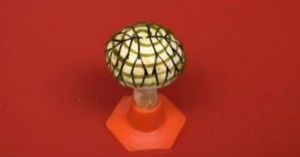- in Gear by Bobby Owsinski
The Bionic Mushroom Could One Day Power The Music World
 As musicians and engineers virtually every piece of gear that we use requires power of some sort. From studio outboard gear to effects pedals to the computers we rely on, we’d be dead in the water without a means to power them. And it’s something that we hardly ever think about unless a battery chooses in inopportune time to fail. That said, many of us are especially aware of the environmental footprint that electricity presents and are trying to go as green as possible, and that’s why the bionic mushroom could one day be so important.
As musicians and engineers virtually every piece of gear that we use requires power of some sort. From studio outboard gear to effects pedals to the computers we rely on, we’d be dead in the water without a means to power them. And it’s something that we hardly ever think about unless a battery chooses in inopportune time to fail. That said, many of us are especially aware of the environmental footprint that electricity presents and are trying to go as green as possible, and that’s why the bionic mushroom could one day be so important.
I know what you’re thinking – has Bobby lost his mind with linking good old fashioned electricity to those delicious grilled white cap mushrooms I had on my stead last night. Well, it turns out that researchers from Stevens Institute of Technology have discovered a way that makes the lowly fleshy fungus a source for power generation.
This all comes from the study of cyanobacteria, an organism that’s widely found in the oceans and on land and has the unique ability to turn sunlight into electrical current. The big problem with the organisms is that they don’t survive that long outside of their natural environments to reach their power potential.
It turns out that the mushroom is the perfect breeding ground for cyanobacteria though. It already provides a home to many other forms of bacteria thanks to an attractive array of nutrients, moisture and temperature, and cyanobacteria love it there. What the researchers did was use a 3D printer to create graphene nanoribbons to cover the top of the mushroom, which then served as a way to collect electricity from the cyanobacteria.
Right now just having a few “magic mushrooms” won’t power much since it takes a couple wired together just to power a single LED. That said, this is a potential source of clean energy for the future that could have lasting implication.
Imagine having your own mushroom garden in your studio’s basement as an eventual power source for your gear. Well, we can dream, can’t we?
You can read the study in the Nano Letters journal.
[Photo: Sudeep Joshi/Stevens Institute of Technology]
